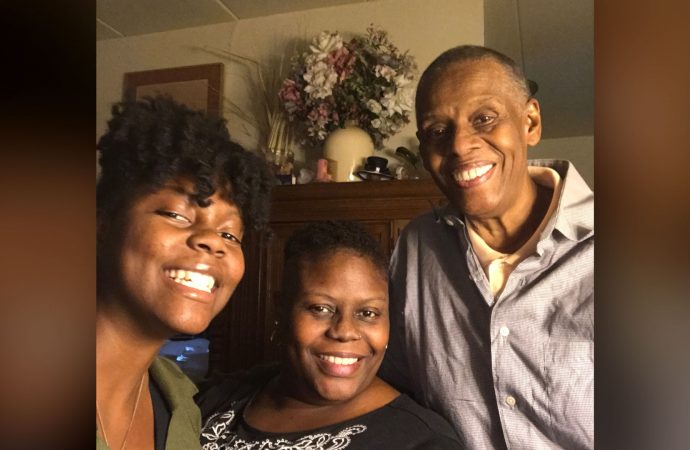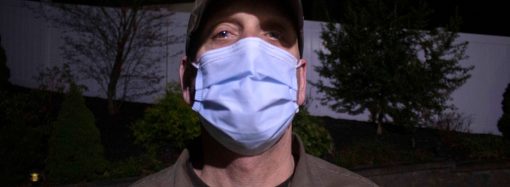By Monei Green
Spring 2020 JRN 363
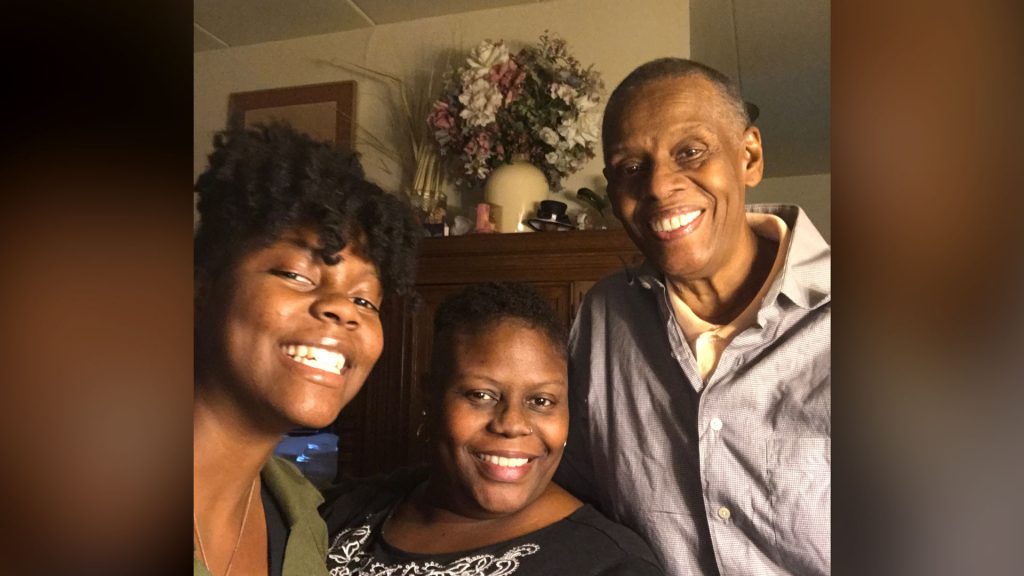
A mother yells to her daughter, “Get up and start getting ready.” The daughter is jolted out of her slumber, which only lasted two hours considering she went to sleep at 4:37 a.m. She rolls out of bed groggy and disoriented but following her mother’s command. She took her shower the night before and laid out her clothes – a t-shirt, sweatpants and Crocs – as if today was the first day of school.
But the daughter is 20 years old and the excitement she once had for school is now stale, yet she does have what you’d call first day jitters. Today will be the first time she leaves her Brooklyn apartment since the coronavirus pandemic sent the world inside. Ever since she packed up her college dorm room during spring break, she’s been confined to the three-bedroom apartment on the second-floor of a six-story building in Bedford-Stuyvesant.
This story is part of a reporting project, Scenes from a Pandemic, produced by students in JRN 337: Intro to Narrative Journalism and JRN 363: Magazine Writing.
See more stories on the scenes from a pandemic website
She misses the floor-to-ceiling window in her dorm room. At home she has to settle for a smaller window with screens and bar guards that mar her views. Her mother and grandmother are her new suitemates and they’ve been coexisting in each other’s constant presence for more than two weeks. She loves them both but misses the outside. Adventuring around her New York City borough with her best friend since high school – museum visits, park picnics, restaurant hopping, all the things they once did – now seems like a distant memory.
But today’s agenda has all three generations of women going grocery shopping together. Why not make it an excursion, dipping their toes back into the neighborhood? A mundane chore becomes a full-fledged mission, requiring a strong team, battle gear and preparation.
The daughter makes her way to the living room with its speckled pastel-blue floor tile, where her grandmother and mother are watching CNN. Every morning – coronavirus pandemic or not – the grandmother wakes up around 7 o’clock. She gets dressed and heads to the living room. While the mother and daughter sleep, she uses her alone time to pray and take communion – breaking bread and drinking the cup. Then, she tunes into CNN, her go-to news network.
When she needs a break from world events, she watches shows the daughter considers old and old-fashioned – The Jeffersons, Sandford and Son, The Andy Griffith Show. Shows from a time when TV pots and people’s problems seemed easier to solve. Every day since the daughter returned home from college, where she is a journalism major, her grandmother has given her daily updates on the virus that she paraphrases from the news reports on CNN.
In today’s miscommunication, the grandmother persists in her report that the virus is airborne – even though it’s not. Her botched updates are not the product of “fake news” but simply her interpretation of what the news anchor has actually said.
“Grandma, the virus is not airborne, but you can get it if someone coughs in the air and their water droplets get on you.” Neither is very good at paraphrasing the news. The older woman dismisses her granddaughter’s poor regurgitation of the facts and sticks to her theory. This will be the grandmother’s first day out of the house as well. It has been 23 days since she last left the apartment she’s called home for more than 40 years.
The grandmother has lived in New York since 1964. Her hometown of York, Alabama didn’t offer many job possibilities so she left at the age of 21 and moved north. The only connection she had to New York was her sister, who had moved there a few years before. But like the independent woman she still is, the grandmother didn’t rely on her sister for anything and adjusted to life in the concrete jungle on her own. She found a place in Harlem, but the Borough of Brooklyn is where life took the grandmother and where she would eventually settle down with her two sons and a daughter on the way.
The rent in the Bedford-Stuyvesant neighborhood was just right for an unwed mother with three young children – in those days, between $83 and $162 a month for a three-bedroom apartment. The area was teeming with working-class black people and the grandmother took her place among them. She worked as a cashier at the Fifth Avenue flagship of B. Altman & Co., an upscale department store that was a retail icon for decades before it closed in 1989. Her job came with many bonuses and perks – tickets to Yankees games, musicals, plays and operas – and she always took her children with her everywhere she went.
On Saturdays, she would go to Prospect Park and sit on a bench, watching her two boys and her little girl play tag and jump rope. Occasionally, she and a few neighbors would head to Coney Island to have picnics and stroll down the boardwalk. Life was peaceful, she says. No pandemics – the only memory she has of being stuck in the house was during the New York City blackout in 1965, but even then, she says, staying inside wasn’t mandatory.
The grandmother stands up from the couch and puts on her green cap. Since barbershops have been closed, her once-shaved head is starting to grow gray peach fuzz. The idea of a low cut came about some time ago when she decided she no longer had the energy to style her own hair and wigs made her sweat. She pulls her face mask all the way up to the bridge of her nose and puts on the sunglasses she picked up at the Dollar Tree. Next, she throws on her cobalt blue jacket and buttons it all the way up to her neck.
She calls to the mother, the last of her four children, who is now 52 years old with two children of her own. “Now don’t let me forget my scarf.”
As she wraps the yellow and green leopard-spotted scarf around her, the daughter looks concerned. “You not gonna be hot with all that on?”
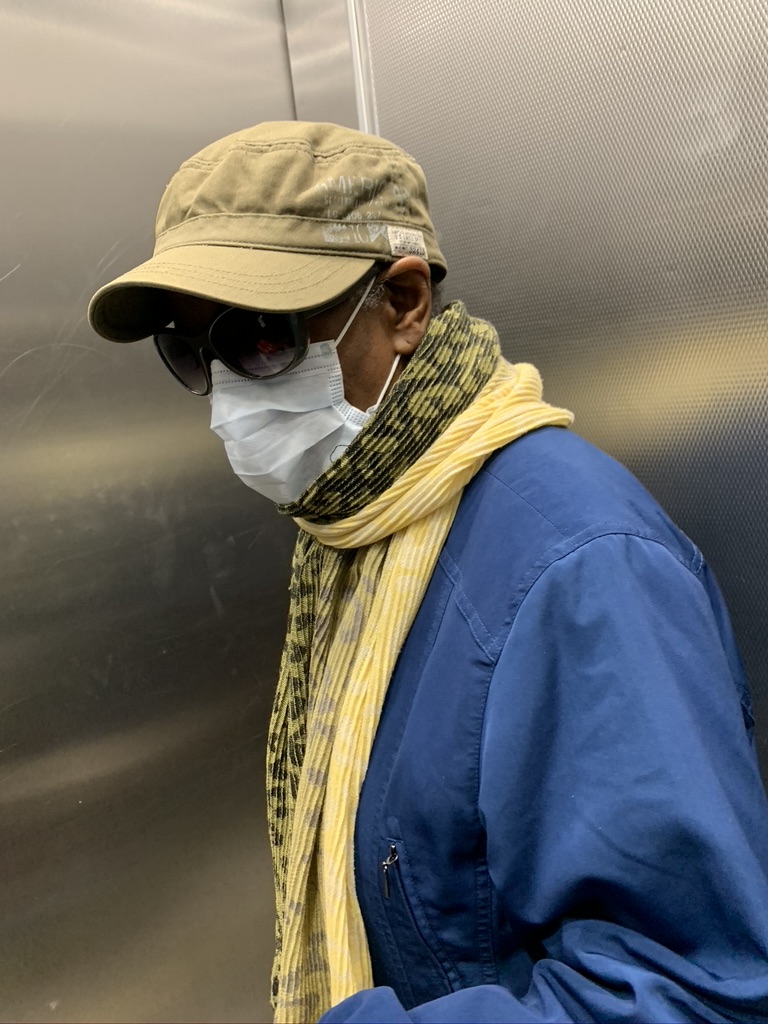
The day is slightly overcast but the temperature is in the mid-60s. According to the grandmother, everyone should wear layers so the coronavirus droplets don’t get through the clothes.
The daughter’s outfit of choice laid out the night before – yellow Croscs, olive-green sweatpants and her favorite olive-green t-shirt with a graphic of Jay-Z’s infamous police mug shot – is as much a statement as the grandmother’s attire. The t-shirt – adorned with the face of the rapper when he was arrested and incarcerated in 1999 for assaulting a record executive is more than just a trendy Urban Outfitters look. As a born-and-raised native of Brooklyn, the daughter connects with Jay-Z, who also grew up in Bed-Stuy, just a few blocks away in the Marcy Houses – a COVID-19 hotspot and one of the deadliest city housing developments during the pandemic with at least 21 deaths to date. She sees Jay-Z’s success as an inspiration. The daughter represents modern-day Brooklyn.
Although the area where they live has historically been synonymous with violence and crime – the motto “Bed-Stuy Do or Die” speaks volumes – the neighborhood is becoming quieter, safer now than when the mother was growing up. Of course that was before the novel coronavirus crept in like a burglar and took the lives of more than 600 Bed-Stuy residents – 125 of them in her own 11213 zip code, according to the New York City Health Department. But in the past decade before the virus, small mom-and-pop shops have given way to well-known grocery chains. Wherever there is empty space, an apartment building will soon be under construction. And the once predominantly black neighborhood is now attracting white people.
For better or worse, gentrification is the catalyst for all these changes. One thing is for sure, Bed-Stuy is not what it once was. It seems like every time the daughter comes home for a vacation break from the suburban university she attends, a store has been replaced, a new condo is on the horizon, and the price of an MTA train pass has gone up – $2.75 the last time she looked.
In some ways, the daughter is thankful for gentrification because revamped areas like Williamsburg and DUMBO make kitschy backdrops for her Instagram pictures. But she’s also conflicted because rent prices are being raised and the people who have lived there all their lives are being run out.
The grandmother always nags that her bills go up despite her using the same amount of gas, water and electricity as always. And the mother has moved to New Jersey where the rent is cheaper but she only stays there on weekends and school breaks because she teaches in Brooklyn. That, and the granddaughter is away at college. There’s no denying the identity of the area is being forever altered.
The mother sits at the dining room table and finalizes the grocery list. “Is there anything else we need to get form BJ’s?” She runs down the inventory scribbled on the back of an old mail envelope. Bread, chicken, oranges, milk. As she gets up, she tells her daughter to listen to her grandmother and at least put a jacket on.
The mother has been stuck in the apartment, too. Not as long as the daughter and the grandmother, but only because she had to complete three days of teacher training so she could move her elementary school social studies class online. Not only did the mother grow up in the Brooklyn apartment, but she has taught some of the kids in the building. It’s been more than a week since one of them passed her in the hallway and greeted her as if they were in a classroom.
Growing up, the mother and her older brothers would play outside with the other neighborhood kids. Kick the can, skellies, jumping rope and making mud pies were the only things on her mind. Her house became the headquarters where all the children in the neighborhood would hang out. Everything was great until she went to high school and witnessed another part of Brooklyn she hadn’t seen before.
At the Boys and Girls High School down the block from her apartment, the mother witnessed crimes and senseless violence. She tells stories of a time when a student set a teacher on fire, when there were fights in school hallways and on street corners almost every day and people where doing all types of wrong. This must have been the era when Brooklyn got its bad reputation. The streets were no longer safe places to play and when the street lights came on, it was for her own protection that the mother rushed home.
But now, in the midst of the pandemic, her home feels like a prison and she can’t wait to get out and go grocery shopping.
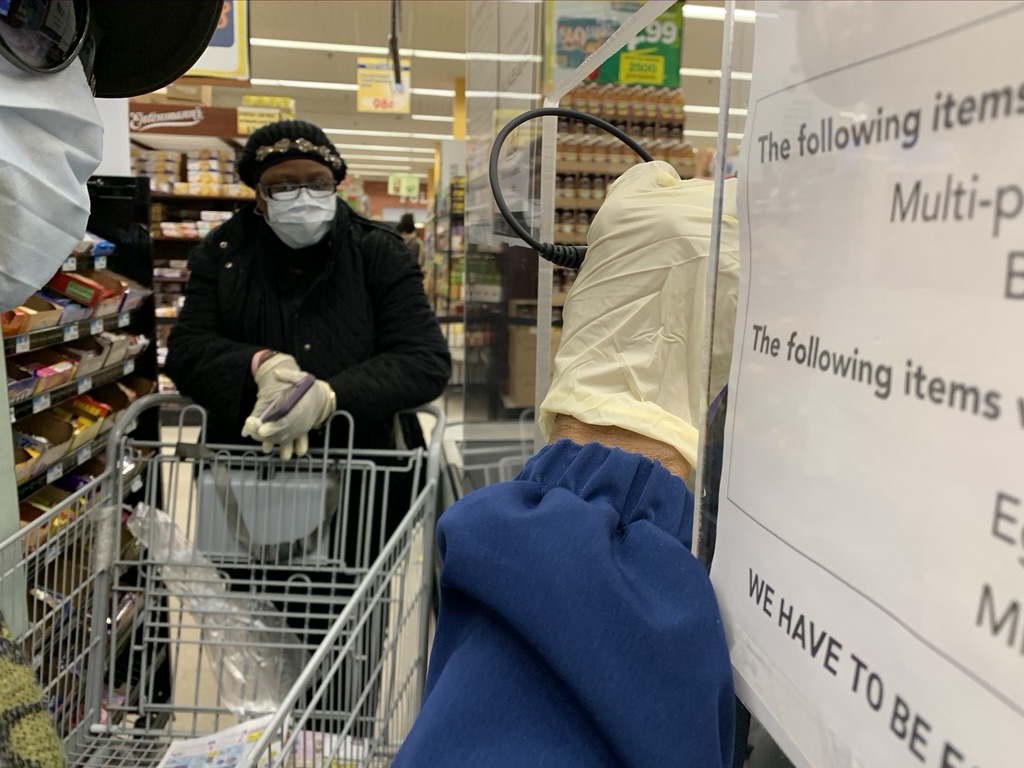
As the three women make their way down the elevator and out of the six-story building, they’re struck by the eerie quiet. They don’t hear anything. Just silence. The Brooklyn of striving black workers and laughing kids playing outside has been hushed. The Brooklyn of thugs and hoodlums cursing and causing trouble has disappeared. The Brooklyn of 24/7 construction noise and screeching cars is quiet.
In its long storied history, Brooklyn has seen many changes – some good, some not so good, and others downright bad – but never has Brooklyn been silenced. The pandemic – already on its way to claiming more than 6,000 lives in the borough – seems to have muted an always mutating place. The deserted streets, parks, playgrounds, corner stores and everything else have left Brooklyn empty of what makes the borough special – its people.
Only the echoes of ambulance sirens can be heard in the distance. As the three generations of women drive along Fulton Street headed to the BJ’s in Gateway Center, they are each in their own way, shocked by what they don’t see and hear.
Never could they have imagined this Brooklyn. The grandmother thinks about her life and how grateful she is for it. The mother thinks the silence is like a breath of fresh air. The daughter thinks about the resiliency of her neighborhood and knows that eventually it will bounce back.
But she can’t help but wonder when? She can’t help but think about the mother and grandmother whom she walks alongside as the enter a grocery store – and about the Brooklyn they each know in their own way and about the Brooklyn they share.
And she can’t help put think about what this Brooklyn neighborhood might look like, sounds like, feel like when, one day, a fourth generation may be walking its streets – and a global pandemic will seam like a tale from the distant past.
